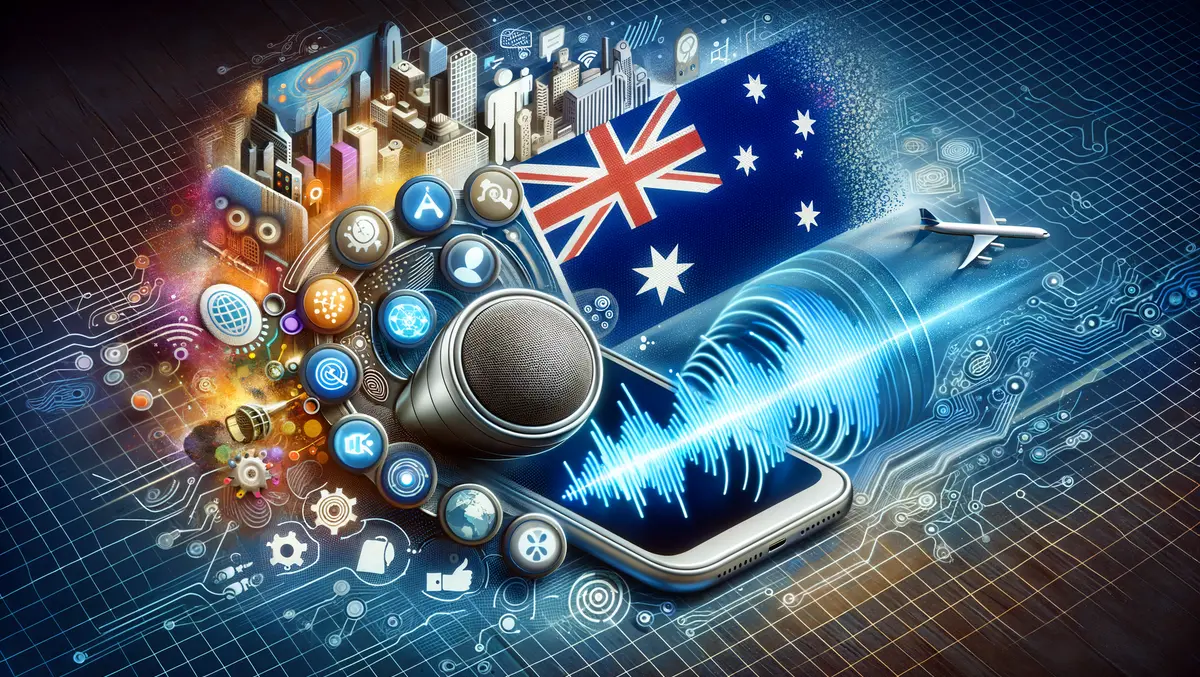
How voice recognition technology can transform customer experience in Australia
Speech and voice recognition technologies have gained interest in Australia in recent years. The demand for speech recognition technology is also growing across industries, including banking, retail, and healthcare. Statista predicts that the speech recognition market in Australia and Oceania will hit US$225.90 million in 2024, with an annual growth rate of 14.80%.
Although speech and voice recognition might seem interchangeable, there's a key distinction between them. Both leverage similar underlying technology, enabling computers to analyse analogue sound digitally, but they serve different purposes.
Simply put, speech recognition allows computers to receive and interpret verbal commands from any user, whilst voice recognition customises the interface to a specific user's voice. This distinction is crucial, especially for security purposes. By only responding to authorised users' voice commands, voice recognition protects against potential system breaches.
The convenience of voice recognition technology helps enable a seamless customer experience. User interfaces also evolve rapidly, demanding companies adapt to meet customers' expectations for convenience, efficiency, and security.
How does voice recognition work?
At its core, speech recognition converts sound into a digital signal that a computer can analyse to identify specific sounds and words and guess their meaning. This enables customers to interact with automated systems to address their needs until human assistance becomes available.
Voice recognition goes a step further. To set up a voice recognition system, users provide multiple voice samples to create a profile or template. These samples encompass various voice tones and volumes.
Using this profile, the computer distinguishes between recognised users and unknown individuals. Voice recognition can also enhance accuracy by accounting for the unique characteristics of a user's speech patterns.
How voice recognition is changing the way we interact online
Customers increasingly prioritise convenience. And what could be more convenient than using your voice to surf the web, place orders, or receive technical support? Voice recognition offers users a natural and intuitive way to interact with technology.
Four use cases for voice recognition
Voice recognition technology has diverse applications that can benefit Australian businesses:
- Biometric security measures: Voice falsification of an authorised user is far more difficult than hackers discovering a password or stealing a phone used in two-factor authentication.
- Transcriptions: Voice recognition can determine where a speaker's dialogue begins and ends to convert speech to text. It can even identify specific speakers in a conversation.
- Accessibility: Real-time voice transcription can add closed captioning for individuals with a hearing impairment, making virtual events more accessible.
- Customer service: Voice recognition can enhance speech recognition as a personalised digital assistant. For instance, a site visitor can use a chatbot to pull up account information or recall past interactions. Based on the individual's voice, the technology can offer personalised product recommendations, answer relevant questions, or even accept payments.
An example of a company that uses speech recognition is Zendesk, a cloud-based customer service platform. Using Twilio's Speech Recognition API, Zendesk integrated interactive voice response (IVR) capabilities into its solutions, allowing its customers to provide seamless multichannel support and enabling a more efficient experience for customers and agents. Since launching its voice offering in 2011, Zendesk has gained the trust of an additional 4,000 companies in 40 different countries, with a 93% customer satisfaction rate.
Leveraging voice recognition for enhanced customer support
Replicating Zendesk's success with Speech Recognition API, Australian companies can implement voice recognition technology for real-time transcription, voice search, and IVR. These technologies allow customers to engage with an automated menu that directly addresses their needs.
Additionally, voice and speech recognition offers personalised and intuitive interactions with technology, which can enhance security, accessibility, and customer service, making interactions seamless and user-centric. Australian organisations have the opportunity to harness this technology to streamline support processes, thereby enhancing customer satisfaction.